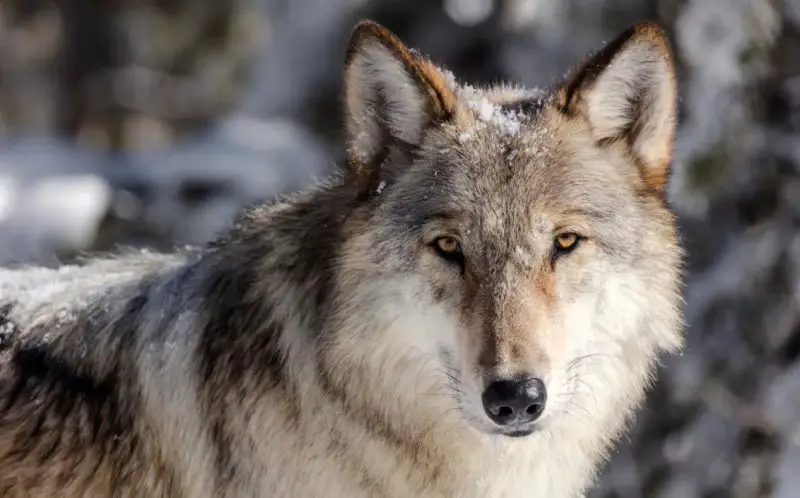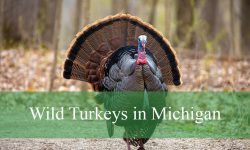In the rugged wilderness of Idaho, where mountains meet dense forests and rivers carve through deep canyons, one animal has become both a symbol of wild beauty and a spark of fierce controversy—the gray wolf. Revered by some as a vital part of nature’s balance and reviled by others as a threat to livestock and game, wolves have returned to Idaho’s landscapes in dramatic fashion.
Since their reintroduction in the 1990s, wolves have not only survived but thrived across the state, reigniting debates about conservation, coexistence, and control. To understand the real story behind these powerful predators, we must look past myths, emotions, and politics.
In this detailed guide, we’ll uncover the truth about wolves in Idaho that will shock you—their origins, behaviors, hunting strategies, and the surprising ways they shape ecosystems. Whether you see them as villains or heroes, one thing is certain: wolves are among the most misunderstood animals in North America.
The Wolves of Idaho: An Overview

A Return from Extinction
By the early 20th century, wolves had been eradicated from Idaho. Government bounty programs, driven by livestock concerns, eliminated them completely by the 1930s. For decades, the sound of a wolf’s howl vanished from the state’s wild places.
Then, in 1995 and 1996, as part of the Yellowstone and Central Idaho Wolf Recovery Program, 35 wolves from Canada were released into Idaho’s wilderness. The goal: restore the species to its native range and rebalance fragile ecosystems.
Today, Idaho is home to an estimated 1,300 to 1,600 wolves, making it one of the largest wolf populations in the continental United States.
Species Identification
The gray wolf (Canis lupus) is the largest member of the dog family. Adults typically weigh 70 to 120 pounds, with males larger than females. Their coats range from silvery gray to jet black, sometimes even reddish-brown.
Their physical power is matched only by their intelligence and complex social behavior—traits that have allowed them to thrive in Idaho’s challenging terrain.
The Secret Lives of Wolves
Social Structure and Hierarchy
Wolves live in packs, typically composed of 6–10 individuals. A pack usually includes an alpha pair (the dominant breeding pair), their offspring, and sometimes siblings or unrelated adults.
Each wolf has a role—leaders, hunters, and pups—all working together to ensure the survival of the group. Pack unity is critical. Wolves communicate using body language, scent marking, and a variety of vocalizations—from howls and growls to whimpers and barks.
Intelligence and Cooperation
Few animals exhibit teamwork like wolves. During hunts, they use coordinated strategies, anticipating each other’s movements and taking advantage of terrain. They can plan ambushes, herd prey toward traps, and even feint attacks to confuse their quarry.
Their intelligence rivals that of dolphins or primates in social complexity—a fact that continues to amaze scientists.
Territory and Range
A single pack’s territory can span 200 to 500 square miles. Wolves travel extensively, sometimes covering 20 miles in a single day, especially during hunting or breeding seasons.
In Idaho, wolves roam across the Sawtooth Mountains, Clearwater Basin, Selway-Bitterroot Wilderness, and Salmon-Challis National Forest—some of the most remote regions in the United States.
Hunting and Feeding Habits
Apex Predators
Wolves are apex predators—at the top of the food chain. Their diet primarily includes elk, deer, and moose, but they’ll also take smaller prey such as rabbits or beavers when large game is scarce.
They are not wasteful hunters. Wolves typically target the old, sick, or weak members of a herd, a behavior that helps maintain healthy prey populations.
Hunting Techniques
Wolves rely on endurance rather than speed. They pursue prey over long distances, testing for weaknesses. Once they isolate a vulnerable animal, the pack works as a coordinated unit to bring it down.
Contrary to popular belief, wolves rarely kill more than they need. The so-called “surplus killing” often reported in the media usually occurs during deep snow conditions, when prey cannot escape and panic ensues.
The Scavenger Role
Wolves also scavenge carcasses, cleaning up ecosystems and preventing the spread of disease. In winter, they become nature’s sanitation team, ensuring balance across Idaho’s wildlands.
The Ecological Role of Wolves in Idaho
The Trophic Cascade
When wolves were exterminated from Idaho, elk and deer populations exploded. Overgrazing destroyed vegetation along rivers, which led to soil erosion and loss of habitat for birds, fish, and small mammals.
After wolves returned, scientists observed a phenomenon called the trophic cascade—a domino effect that restores balance to entire ecosystems.
- Elk behavior changed, avoiding overgrazed valleys.
- Vegetation rebounded, including willows and aspens.
- Beavers returned, building dams that improved water quality.
- Songbirds and fish populations increased as habitats regenerated.
In short, wolves helped Idaho’s wilderness heal itself.
Keeping Coyotes in Check
Wolves also regulate coyote populations. When wolves disappear, coyotes surge—often preying more on livestock and smaller game. With wolves present, ecosystems stabilize naturally, reducing conflicts for farmers and ranchers.
Conflict and Controversy
Ranching Tensions
For many Idaho ranchers, wolves symbolize danger and loss. Attacks on livestock—especially cattle and sheep—are among the most contentious issues.
While verified wolf depredations account for a small percentage of total livestock losses (less than 1%), even one incident can cause significant financial harm. Programs like Defenders of Wildlife’s compensation fund reimburse ranchers for confirmed losses, but distrust remains.
Hunting and Control Programs
Since wolves were delisted from the Endangered Species Act in 2011, Idaho has managed its own population through regulated hunting and trapping.
Current laws allow for:
- Year-round wolf hunting in some regions
- Trapping and aerial gunning under control permits
- Population management goals to maintain sustainable numbers
Supporters argue this protects livestock and game herds; critics see it as excessive, threatening long-term stability.
Political and Cultural Divide
In Idaho, wolves have become a lightning rod for broader cultural conflicts—between rural and urban values, conservation and control, science and politics. While some view wolves as vital ecological partners, others see them as government-imposed predators.
Reproduction and Pack Growth
Mating Season
Wolves breed once a year, typically in February or March. After a gestation of about 63 days, the alpha female gives birth to 4–6 pups in a hidden den.
Pups are born blind and helpless, relying entirely on their parents and packmates. By summer, they begin exploring outside the den, learning social cues, and practicing hunting behaviors through play.
Family Bonds
Wolves are highly nurturing parents. The entire pack helps feed and protect pups, bringing regurgitated food from hunts. Even older siblings assist, strengthening social bonds and ensuring generational survival.
By autumn, young wolves start accompanying the pack on hunts. Some may disperse as yearlings, traveling hundreds of miles to form new packs elsewhere.
Myths vs. Reality
Myth |
Reality |
|---|---|
Wolves kill for fun. |
False. They kill for survival and rarely waste meat. |
Wolves are overpopulated in Idaho. |
False. Populations fluctuate naturally and are managed by the state. |
Wolves are dangerous to humans. |
Extremely rare. Fewer than 10 fatal attacks in North America in a century. |
Wolves destroy elk herds. |
False. They help maintain healthier, balanced herds. |
Wolves are invasive in Idaho. |
False. They are a native species historically present for thousands of years. |
The Wolf’s Relationship with Humans
Ancient Symbolism
Wolves have held deep cultural significance for centuries. In Indigenous cultures of the Pacific Northwest and Northern Rockies, the wolf symbolizes loyalty, family, and endurance.
For the Nez Perce people, who inhabit parts of Idaho, the wolf was a sacred teacher. Their mythology celebrates the wolf’s intelligence and role in maintaining harmony in nature.
Modern Public Perception
Today, public opinion is deeply divided. Urban residents often romanticize wolves as icons of wilderness, while rural communities bear the realities of living alongside predators.
However, educational programs and eco-tourism initiatives are helping bridge this gap. Wildlife tours in places like Sawtooth National Recreation Area now attract visitors eager to see or hear wolves in the wild—bringing both awareness and economic benefit.
Strange and Little-Known Facts About Wolves in Idaho
- Wolves can run up to 35 miles per hour for short bursts during hunts.
- A wolf’s howl can be heard up to 10 miles away in open country.
- They can survive temperatures as low as -40°F, thanks to their thick double-layered fur.
- Wolves form lifelong pair bonds, remaining with one mate until death.
- Their teeth exert 1,500 psi of pressure—twice that of a German shepherd.
- Each pack has a unique howling “dialect” recognizable among neighbors.
- Wolves can swim for miles, crossing rivers and lakes with ease.
- Wolf packs occasionally adopt lone wolves, increasing genetic diversity.
The Future of Wolves in Idaho
Population Management
Idaho’s wolf population remains strong, but maintaining balance is crucial. Biologists aim to keep wolf numbers sustainable without overwhelming prey species or agricultural interests.
Efforts include:
- Monitoring via GPS collars and field tracking
- Adjusting hunting quotas seasonally
- Engaging communities in coexistence programs
Coexistence Strategies
Non-lethal deterrents are proving effective for ranchers, including:
- Fladry (flagged fencing) to deter wolves from pastures
- Range riders who monitor herds
- Guard dogs and improved carcass management
These methods reduce conflict while protecting livelihoods and wildlife alike.
Conservation and Education
Organizations like Idaho Fish and Game, Defenders of Wildlife, and the Wood River Wolf Project continue to educate the public about coexistence. Their research helps dispel fear and misunderstanding—ensuring that wolves remain a respected, vital part of Idaho’s natural heritage.
FAQs About Wolves in Idaho
Are wolves dangerous to humans?
No. Attacks are extremely rare. Wolves generally avoid people.
How many wolves live in Idaho?
Approximately 1,300–1,600, depending on yearly counts.
What do wolves eat?
Primarily elk, deer, and moose, but they also scavenge carrion and hunt small mammals.
Are wolves still protected?
Wolves in Idaho are no longer federally protected but are managed under state laws.
Do wolves affect hunting opportunities?
Slightly, but studies show that elk populations remain healthy in most areas.
Can wolves be hunted?
Yes, under regulated state seasons and permits.
Conclusion
The wolves of Idaho are more than just predators—they are survivors, teachers, and crucial players in the ecological story of the American West. Their return has reshaped landscapes, revived ecosystems, and challenged us to rethink what coexistence truly means.
While the debate over their presence continues, one truth stands above all: wolves embody the untamed spirit of Idaho itself. They remind us that wilderness still exists—powerful, complex, and beautifully wild.
So, the next time you hear a distant howl echo through the mountains, remember it’s not a sound of fear—it’s the voice of nature, reclaiming its rightful place in the heart of Idaho.






